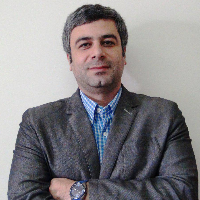Investigating the effect of drilling mud-cutting on the contamination level of heavy metals and polycyclic aromatic hydrocarbons (case study: Well B of Azadegan South Oil Field)
The process of extracting and exploiting oil and gas resources requires a cycle of production, delivery, and recycling of drilling mud or drilling fluid to achieve the right composition of drilling mud and recycling it as a fundamental issue in the oil industry and also, the environment. For this purpose, waste management methods are usually used.
In this study, an alternative method was chosen instead of the conventional method of stabilization/solidification as a drilling waste management process that is environmentally and economically viable. A total of 80 samples were taken from four types of samples taken from nine levels in an oil well in the south Azadegan field, including mud-cutting mixture, washed cutting, fixed mud-cutting mixture by cement (1:12 portion), and fixed mud-cutting mixture by cement and silica (1:12 and 1:400 portion).
Samples were prepared in different types of washed, with drilling fluid, stabilized, with cement, and stabilized with cement and sodium silicate to assess the concentration of heavy metals and polycyclic aromatic hydrocarbons (PAHs), as well as the salinity. The concentration of heavy metals in the samples showed that no waste management process is required to control or reduce the metals in the samples, but salinity and PAHs require treatment at a depth of 1800 m and more.
Summarizing the results of the analyzes showed that the washing process is better from the environmental point of view than the conventional method of stabilization/solidification because the contaminants have been removed from the drill bit, which will be utilized as the final product of this process. However, in the stabilization/solidification method, the pollutants are not purified. Therefore, the washing process was able to remove the contaminant from the excavation wells, so that the washed samples were according to the standard soil of Iran until the end of the standard drilling operation.
- حق عضویت دریافتی صرف حمایت از نشریات عضو و نگهداری، تکمیل و توسعه مگیران میشود.
- پرداخت حق اشتراک و دانلود مقالات اجازه بازنشر آن در سایر رسانههای چاپی و دیجیتال را به کاربر نمیدهد.



